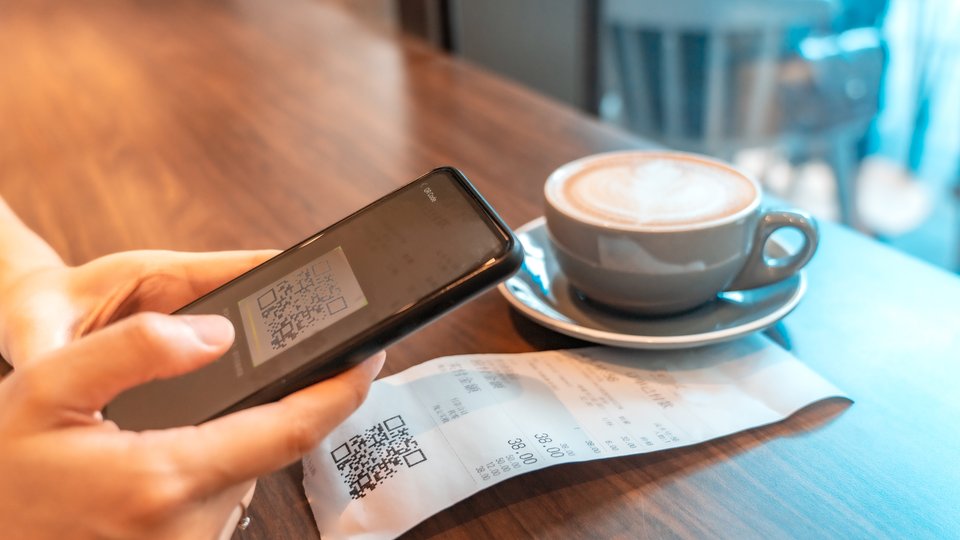Technology
QR codes get a new life as COVID-19 recovery spurs contactless payments
The rapid demand for safe, contactless merchant payments has led to renewed interest in QR codes, a payment technology that historically dominated Asian markets, but lagged NFC use in the U.S.

July 21, 2020 by David Jones — Editor, Networld Media Group
As restaurants, independent retailers and micro-businesses begin their recovery efforts from the COVID-19 pandemic, a growing number of merchants are embracing QR code technology as a simple, low cost alternative for payments and customer interaction as demand grows for a safe and cost efficient payments solution.
While widely popular in China and other overseas markets, QR codes have generally lagged NFC as the preferred methods of digital payment technology in the U.S. However for a growing number of micro-businesses and boutique merchants, they are giving QR codes a hard look as the safest, fastest and most cost efficient path to get customers willing conduct in person transactions.
"There is definitely more interest in QR codes as an addition to NFC for contactless payments, driven in large part by the movement to contactless from the pandemic," Thad Peterson, senior analyst at the Aite Group.
QR codes generally work by allowing a consumer to scan a barcode using their mobile phone camera, which then opens a direct link between the customer and merchant. QR codes are being used for a range of situations, from buying coffee at local cafes, to getting price information on grocery store shelves or retailers and a relatively new trend is reading updated food menus at restaurants.
Mobile phone camera technology has developed over the years to allow consumers to get a clearer barcode scan from a safe distance, so consumers can now stand several feet away from a store shelf, a food vendor or street merchant, and complete a purchase without the need to exchange cash or directly touch a surface.
"QR code payments specifically have been gaining more attention lately since they can often provide a lower cost contactless option for merchants and can also offer additional functionality such as a built-in loyalty program or email capture for marketing purposes," Nate Hirshberg, vice president of marketing at Shift4Payments, an Allentown, Pennsylvania-based provider of payment processing services. "Additionally QR codes are able to be used in scenarios where NFC is more difficult to implement, such as in restaurants and bars where the payment device isn't typically brought to the customer."
For smaller merchants, a QR code payment system opens up new possibilities because the mobile phone itself can be used to process a transaction without having to pay for expensive infrastructure and technology, allowing them to accept payments using their own mobile devices.
"QR is popular because it requires less infrastructure than card payments," Nick Maynard, a lead analyst at Juniper Research. "Merchants do not need a POS terminal to make payments, which is suitable for small business."
He said that QR codes are very simple and accessible on a wide range of devices for consumers, which can be beneficial for deployment particularly in developing markets.
According to a 2018 study by Juniper Research, QR code redemption globally was projected to reach about 5.3 billion transactions by 2022, which was about four times the level of 1.3 billion transactions in 2017.
However, the COVID-19 pandemic and the accelerated demand for QR code based payments in the U.S. and other western markets may likely shatter those prior estimates.
"Cost is a huge part of it," Jonathan Hoyles, CEO of Perk Labs, a Vancouver-based company that offers a loyalty and payments platform for restaurants and small businesses.
He explains that for many merchants in the Chinese market there was not a preexisting payments infrastructure already creating a barrier to entry for merchants, while the North American market already had an existing payments infrastructure standing in the way.
His company has expanded its QR code-based system to boost adoption among personal services companies, including hair salons and barber shops, where customers often pay for services and tips using cash.
PayPal Holdings Inc. rolled out a plan in May to enable QR codes for payment in 28 markets around the world. The payments firm said that QR codes would allow safe and secure digital payments among a growing number of use cases, such as farmers markets, sales of secondhand goods and other types of transactions.
Late last month, Apple Inc. previewed a new feature in iOS 14 called App Clips, which allow merchants to use NFC tags or QR codes for specific types of products or transactions, such as renting a scooter or paying a parking meter.
A new report in 9to5 says that Apple is working on a feature in the new OS that allows customers to make QR code payments using Apple Pay. An Apple spokesperson was not immediately available for comment.
.
About David Jones
David Jones is the editor of Mobile Payments Today. He is a veteran business and technology journalist, with three decades of experience writing about business travel, real estate and technology.
Since 2015 he covered a range of technology stories for the ECT News Network, which includes the E-Commerce Times, TechNewsWorld, LinuxInsider and CRM Buyer, writing about cybersecurity, artificial intelligence, machine learning, open source computing and privacy issues among others. He recently covered FinTech issues for PYMNTS.com.
He worked as a staff writer for Bloomberg Business News and an online reporter for Crain’s New York Business. He has written for numerous media organizations, including Reuters, The New York Times, The Real Deal, Continental, City Limits and The Nation.
He was previously awarded the George Washington Williams Fellowship for Journalists of Color by the Independent Press Association.
